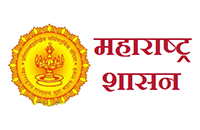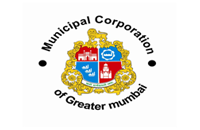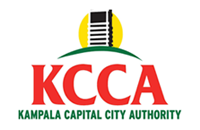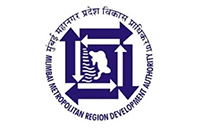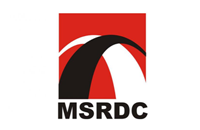Case Studies
Rural Development Department (RDD)
— E-Panchayat
The Rural Development Department (RDD), Government of Maharashtra (GoM) is one of the pioneers of e-governance in India. Read More
Kampala Capital City Authority (KCAA)
— Visual Data Validation Solution
The Kampala Capital City Authority (KCAA) is the governing body of the capital city Kampala in Uganda and is the city administrator. Read More
Maharashtra Information Technology Corporation Limited (Maha IT) - ULB
Urban Local Bodies (ULBs) in Maharashtra are at the forefront of delivering services to citizens and the Urban Development Department Read More
Maharashtra Information Technology Corporation Limited (Maha IT) — MahaIT-Technical Manpower (Empanelment)
Directorate of Information Technology, Maharashtra, was formed with a single goal—to develop ICT and e-governance in the state. Read More
Municipal Corporation of Greater Mumbai (MCGM)
— MCGM-GIS
The Municipal Corporation of Greater Mumbai (MCGM), which is responsible for the civic and infrastructure needs of Mumbai. Read More
Rural Development Department (RDD) — E-Panchayat
The Rural Development Department (RDD), Government of Maharashtra (GoM) is one of the pioneers of e-governance in India. With information technology changing the way we live and do business, RDD believed that Information and Communication Technology (ICT) could be effectively leveraged to deliver a variety of information and services to the citizens in a time-bound and efficient manner. The RDD wanted to pursue e-governance in several districts as per the vision and objective of the e-Governance Policy of Maharashtra 2011 and achieve the following
objectives:
- To maintain and strengthen the leadership of the state in the area of e-Governance and take it towards m-Governance
- Enable citizens to avail of various services online, or at a place near their home, without having to visit Government offices at minimum possible cost
- Enable Government to function more efficiently and move towards a paperless environment
Objective: The government of Maharashtra wanted to make all the government services accessible to the common man through computerized services in seven districts, namely Nanded, Latur, Yavatmal, Satara, Sangli, Jalgaon & Jalna.
Solution: Innowave IT Infrastructures developed a complete rural ERP solution and was also involved in the implementation, rollout and training in nearly 30,000 Gram Panchayats. The following were the highlights of the ePanchayat Solution:
- Introduced common citizen services online in their own locality
- Introduced online payment option through various banks and payment gateway providers
- Enhanced transparency and accountability in the administration of the Panchayati Raj institutions
- Trained manpower at 30,000 offices of Gram Panchayats, Panchayat Samitis and Zilla Parishad to help with the online citizen services and help set up centralized help-desk and support
- During the project period, 7000+ technical resources were deployed on the project.
- Set up an IT Facility Management Services, Application Change Management, Centralized help-desk and Support, Software Design & Development, Hosting and AMC for a period of 4 years from 2015.
Kampala Capital City Authority (KCAA) — Visual Data Validation Solution
The Kampala Capital City Authority (KCAA) is the governing body of the capital city Kampala in Uganda and is the city administrator. The authority was looking for an agency to help improve its capacity to implement projects on time and within budget, raise revenue by at least 15%, improve government to citizen services and update city data based on ground reality. It also wanted to strengthen the use of information and communication technology.
The city administration did not know the present available data and hence revenue derivation became a problem. Besides, surveys of properties took a long time and the city urban officers didn’t have any full-proof mechanism to check surveyed data until field validation was done. Often, manual errors would creep into such surveys.
objectives:
Visual Data Validation Solution based on 360 Degree Street view and LiDAR data
Challenges:
KCCA faced a lot of challenges when it used the traditional system of manual surveys. They include:
- Property survey takes a long time
- During manual surveys, mistakes crept in and they were unidentified
- Requirement of highly skilled resources
- Only 50% of citizens could read map data
- People were reluctant to accept surveyed data
- Weak data validation process
- No visual proof of properties for taxation
- Deviated properties (Under assessed, change of use and un-assessed) were found at the end of project cycle
- City administration did not have present available data hence derivation of enhanced revenue a challenge
Solutions:
The scope of work designed and developed for the project are:
- Captured 360Degree panoramic Street view data and LiDAR data of complete city using vehicle mounted terrestrial LiDAR scanner and 360 degree camera.
- Tagged properties with available legacy data and 360-degree panoramic data before actual survey to segregate as Unassessed properties, change of use properties and under assessed properties.
- Supervised performance of local tax collection officer with well-defined accountability
- Data collected for property tax also yielded benefits for Road department, Street light department and water department as their native network data can be cross referenced
- Provided present status of all ongoing projects, verified and validated through visual data
Maharashtra Information Technology Corporation Limited (Maha IT) - ULB
Urban Local Bodies (ULBs) in Maharashtra are at the forefront of delivering services to citizens and the Urban Development Department of the Government of Maharashtra was seeking to bolster its service delivery infrastructure. It wanted to deliver end-to-end services to both citizens and businesses in a very user-friendly way, and also allow it to maintain a high level of transparency and accountability on the government’s side. The ULBs consisted of 26 Municipal Corporations and 340 Municipal Councils/Nagar Panchayats.
Objective:
Implementation of an Integrated Web-based solution across ULBs in Maharashtra, excluding the Municipal Corporations of Thane, Mumbai, Nagpur, Nashik, Pune and Pimpri-Chinchwad. The project aims to improve standards of citizen services by providing better information and speedy delivery, ensuring satisfied customer interaction by one-click interaction. It also aims to increase the efficiency and competency of the ULBs by increasing staff productivity, reduce overheads with fewer offices and paperless management, streamline all procedures and facilitate connectivity between various offices.
Solution:
- Deployment of solution centrally on cloud, implementation and maintenance of the system including the support required for cloud hosting at data center.
- Provided operations and maintenance services for a period of 5 (five) years after go-live of the entire solution, including software, hosting support at the Cloud Center etc.
- Provided IT facilities management services for any IT related issues such as software, applications, infrastructure, servers, network etc.
- Established and maintained IT help-desk, which would serve as a single point of contact for all incidents and service requests
- Prepared documentation, presentations, flowcharts and training aids, which was used to impart training to employees, trainers and other key stakeholders on the usage and maintenance of the system
- Provided training and capacity building to master trainers as well as technical trainingtoITIs,RO,HO and college officials for efficiently using the system
- Provided hand holding support during the transition period and aid in data classification, sanitization and migration
Maharashtra Information Technology Corporation Limited (Maha IT) — MahaIT-Technical Manpower (Empanelment)
Directorate of Information Technology, Maharashtra, was formed with a single goal—to develop ICT and e-governance in the state. DIT was looking for an agency to help it formulate a policy framework for Maharashtra’s e-governance program, put in place a pan-state organizational structure that would connect departments across the state, district and talk levels and provide technical manpower for the IT facilitation cells. The total resource requirements were 354 (50 at State level, 144 at District level and 160 at Taluk level). With the rapid adoption of e-governance across all departments in the state, there was also a need for augmenting the existing SDC infrastructure.
Objective:
Selection of Agency for Providing Technical Manpower for Formation of Pan-State IT Facilitation Cells. The objectives of the agency would be:
- PURCHASER intends to have a Pan-state Organizational Structure in place, which spans the State, District and Taluka levels, to be able to reach out across all the departments and functions at various levels, and to promote the vision and mission of PURCHASER at all these levels.Provided technical manpower and support to all departments, creating a sustainable organizational team structure spanning across the state
- Through this RFP, PURCHASER seeks to appoint a reputed IT/ITES organization which can supply the requisite technical manpower to enable PURCHASER to build a competent and sustainable organizational team structure spanning the state, and bring in appropriate project management and project execution experience, for executing, or supporting the execution of the programs and projects of PURCHASER, as well as the IT programs or projects of other departments, at various levels, under the guidance of the State leadership of PURCHASER.Provided technical advisory to departments on eGovernance projects
- Provided project management expertise for executing and supporting the e-governance initiative as well as the IT programs or projects of other departments at various levels
- At a district level, provided training and capacity building on various applications, gap analysis on hardware and software requirements, supported the technical help desk with field level information and department on boarding
Municipal Corporation of Greater Mumbai (MCGM) — MCGM-GIS
The Municipal Corporation of Greater Mumbai (MCGM), which is responsible for the civic and infrastructure needs of Mumbai, such as maintenance of roads, streets, flyovers, municipal schools, water supply and purification, hospitals, street lighting, lighthouses, maintenance of parks and open local spaces, sewage treatment and disposal, garbage disposal, street cleanliness, cemeteries and crematoriums, registering of births and deaths in the city, wanted to enhance property tax collections in a transparent way.
It was looking to develop a proper support system and property tax assessments department that would capture information related to properties as they existed on the ground using state-of-the-art mapping and surveying technologies. The Integrated Property Validation Solution (IPVS) was also intended to provide authentic ground data gathered through satellite imagery, LiDAR data and physical field survey to validate MIS tax records at MCGM and/or identify discrepancies for property tax assessment and reconciliation processes.
Objective:
Implementation of Integrated Property Validation Solution (IPVS) Using 360 Degree Immersive Panoramic Data and Terrestrial LiDAR Data
MCGM wanted the project to achieve the following objectives:
- Improve property validation mechanism to enhance revenue potential.
- Create Visual indications of deviated properties on web based geospatial system
- Develop Centralized web based solution with multiple accessibility
- Provide visual geospatial base solution to integrate vital property parameters
- Provide as-is visual data to be utilized by various department of corporation.
Solution:
Innowave IT Infrastructures developed an Integrated Property Validation Solution, which compared on-ground data with MIS tax records at MCGM, and enabled accurate reconciliation and accurate property tax assessment. The solution also provided data for interpreting information relevant to other related MCGM functions such as hoardings, hawkers, street furniture, municipal assets, tree census etc. The Integrated Property Validation Solution was an online centralized solution that enabled various stakeholders to view and share information gathered from different sources to improve decision making. The baseline data including updated base map, 360 degree immersive panoramic imagery, Terrestrial LiDAR point cloud data, and field survey data also helped many departments of MCGM for decision making. The scope of the work designed and developed during the project are:
- Coordinated for procuring satellite image of MCGM area
- Creation/ Updation of base map for complete MCGM area from /Using Satellite image
- Conducted field survey to capture buildings/property details
- Surveyed MCGM area with terrestrial LiDAR equipment to capture point cloud data for measurement
- Surveyed MCGM area with Panoramic Imaging equipment to capture 360 degree immersive visual image data.
- Integrated MCGM MIS data, base map (CAD) data, Field survey data and 360 degree immersive visual image data.
- Designed and developed a web-based property validation system with intelligent visualization tool to display integrated data.
- Designed web-based system to provide Tagging facility for property numbers in Visual and map data
- Performed analysis of integrated data to generate various reports to support property tax
- Conducted a detailed survey of the deviated properties to derive revenue potential
- Provided 24x7 solution accessibility by hosting the application and data on a dedicated infrastructure during project period/ warranty period and till MCGM decides to host it from their native servers.
- Provided training on complete solution besides hand holding and support during warranty + maintenance period.
- Provided project covered services (data capture, application extension) during warranty period as per request of MCGM officers
- Conducted Terrestrial LiDAR survey of navigable roads of MCGM to generate RMMS card data, DSR (details Survey report) AutoCAD map of road, Point cloud data (in .Las format)
- Developed web-based application to host and publish the integrated road data (360 degree immersive panoramic image data, CAD map, RMMS card data)
- Supplied hardware to host the data delivered to 24 ward offices
